A trip to Tunisia promises a first-hand look at a country proud of where it stands in the region and in the world. Tunisians, who had massive street protests and an attack at their famed art and history museum in the last decade, have entered an era of peace that is, as hope here has it, built on the idea of moving beyond the corruption that brought on the Arab Spring. Tunisia is rich in history, most easily experienced through the vibrant flavors of the country’s Arabic and North African cuisine steeped with French and Roman influence. The country is also home to more than 900 miles of Mediterranean coastline that will give you plenty of use for that swimsuit you packed. For first-time visitors to North Africa, Tunisia is the ultimate way to experience the Maghreb region. This is what to know before you go.
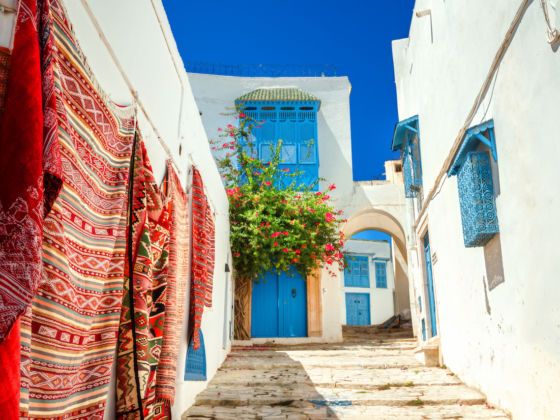
Why Tunisia Should Be Your First Stop in the Arab World
In our lifetime, Tunisians have fought for — and gained — significant personal freedoms.

Photo: Kertu/Shutterstock
On December 17, 2010, a Tunisian street vendor named Mohamed Bouazizi lit himself on fire in a public square in the north Tunisian city of Ben Arous. Bouazizi did this to protest corruption and harassment after being publicly reprimanded and humiliated by a police officer who, after Bouazizi failed to pay a bribe, had confiscated his vending setup. His action lit a passionate wave of protests throughout the country, which stretched on for 27 days in what became known as the Tunisian Revolution. The loathed President Zine El Abidine Ben Ali was forced from power after more than 20 oppressive years in office, a term that had of late been defined by staggering unemployment and worsened by the public’s increasing awareness of the political corruption they saw as a defining cause of the country’s ill-functioning economy.
The impact of Bouazizi’s violent death and the revolution that followed spread not only throughout Tunisia but across much of the Arab world, eventually leading residents in more than a dozen nations across North Africa and the Middle East to take to the streets against government oppression and poor living conditions. The Arab Spring, as the uprising is known, began on that December day and carried on in force for over eighteen months, not formally calming until December of 2012.
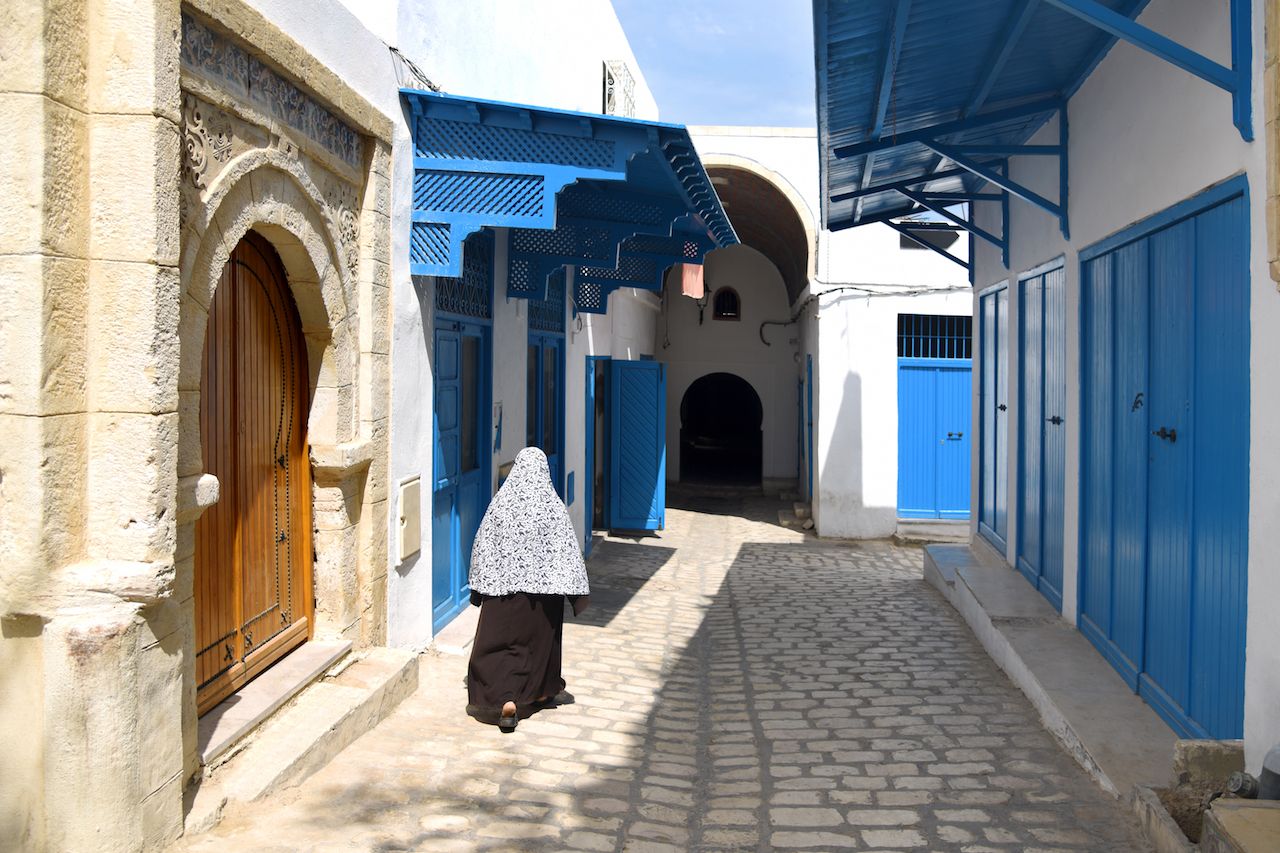
Photo: Anna Fevraleva/Shutterstock
It is impossible to discuss Tunisia without recognizing the impact that the Tunisian Revolution, and the Arab Spring, had on the country and its people. The mutiny here arguably stands as the most successful of the uprisings, leading to fully democratic governance following a long-standing autocratic reign and prior, the country’s independence from France which happened only in 1956. Today the country is slightly more progressive than most Arab states, and Tunisians now enjoy significantly more personal freedoms than they did prior to the revolution, including the right to express themselves via dress and hobbies much more freely.
The progress is most emphasized by the free elections that followed the revolution and, in July 2018, Tunis’s election of its first female mayor, Souad Abderrahim. Despite its gains in personal liberty, the country still has progress to make — the young government remains a fragile experiment, and many Tunisians feel that old problems such as curbing unemployment and building a stronger economy remain to be solved. LGBTQ rights also have a very long way to go; same-sex sexual activity is illegal though there’s been much lobbying by human rights groups to repeal this law in recent years. That said, of all countries in North Africa and the Middle East, Tunisia is among the most welcoming.
Tunis is a confluence of cultures.
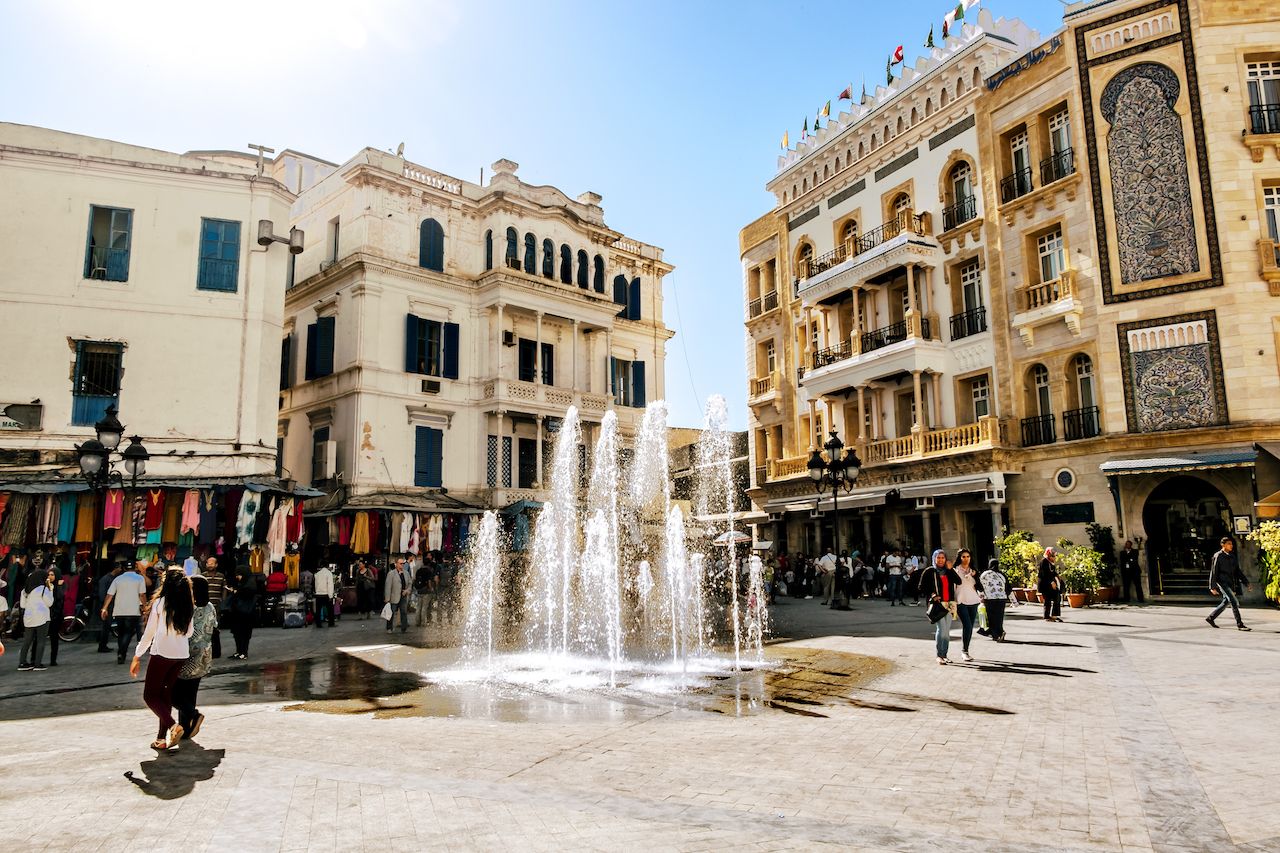
Photo: Anton Kudelin/Shutterstock
You’ll likely land in Tunis, the country’s capital and biggest city, which is home to an international airport that brings flights in from Paris and other regional hubs every day. Arabic is the official language here though German and French are commonly spoken in Tunis and other tourist areas. Many speak English as well, making communication as easy as it is in larger tourist hubs throughout the region.
A walk through the capital’s neighborhoods and squares takes you through 4,000 years of history. Stop one should be the Bardo National Museum, home to a collection of Roman mosaics and traditional Islamic art. Art fans should also visit Galerie El Marsa, a gallery dedicated to contemporary Arab artists of a variety of styles, and Le Violon Blue, which houses an extensive collection of Middle Eastern art.
Music enthusiasts should take in some traditional Andalusian music, called Malouf, while in the city. If you manage to score an invitation to a traditional Tunisian ceremony or attend a cultural festival or event while you’re there, the ambient sounds of sitars are likely to fill the air. Cafes and nightclubs throughout the city often feature live music, both traditional and modern. The city’s more progressive take on entertainment means you can find DJs, rock bands, and even a dose of salsa — be sure to visit the Cubano Latino Cafe — sprinkled throughout the city.

Photo: Jess Kraft/Shutterstock
Bazaars are known souks here, and Tunis is full of the most beautiful souks in North Africa. But unlike in Morocco, you won’t be battling hundreds of tourists on top of thousands of locals. Start with the Tunis Central Market at the entrance to the medina, local parlance for old town, and experience a thriving collection of vendors hawking everything from spices and vegetables to clothing, makeup, and henna. The place is packed most days with people shopping for their needs for the day or a gift to take back home. For a more mellow experience, seek out the Souk El Grana, a smaller market surrounded by Andalusian architecture cleverly located in an alley near Rue de la Kasbah, still in the heart of town.
The architecture and ruins are equally stunning.

Photo: Alarax/Shutterstock
As you move through the medina, you’ll undoubtedly see the tower of the Zitouna Mosque poking through the skyline. This historic building was raised in the year 732 AD and still offers an open prayer hall, though the hall is closed to non-Muslims. East of central Tunis but not far from the airport is Carthage, where you’ll find several ancient ruins including the Salammbo Tophet and the Quartier Magon, both located just off the coast.

Photo: Charged One/Shutterstock
Homes in Tunisia are typically built around a central courtyard not viewable from the street, in the traditional Muslim style. Bright, vibrant blues and whites define the architecture of the country, and the beachside town of Sidi Bou Said, 35 minutes east of the city by train, is the best place to see this for yourself — a less touristy alternative to the famous blue city of Chefchaouen in Morocco.
If you head south of Tunis to Sousse for a beach getaway, consider going a bit further to El Djem. The highlight here is the Roman amphitheater of the same name, a massive coliseum that is among the most intact and well-preserved pieces of ancient Roman architecture anywhere in the world.
The beach experience is actually relaxing.
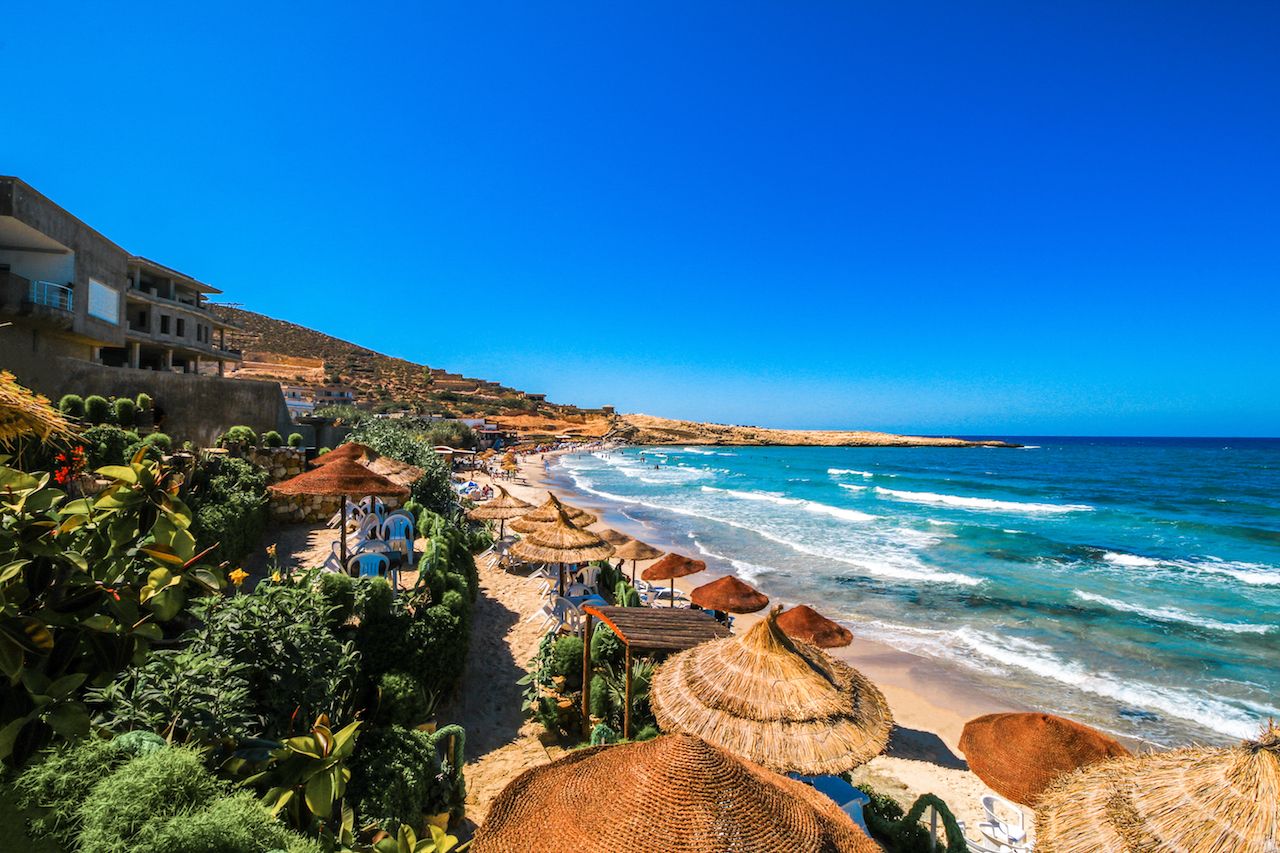
Photo: Zribis/Shutterstock
Because Tunisia is physically closer to Italy than it is to Istanbul or Dubai, it often isn’t thought of as a beach hub in the Arab world. Dubai, Israel, and Antalya are the typical destinations that capture most global attention. Use this to your advantage and get to North Africa before the hordes do.
A trip to the beachside city of Sousse is among the most relaxing trips you can take in the Arab World. With 270,000 residents, Sousse is the third largest city in the country and home to many of its best beaches and resorts, including Bou Jaafar Beach and Las Vegas Beach, free of both the crowds and the price tags of Dubai. Though, if the Dubai itch does kick in during your stay, you can certainly find a helipad to land on and a personal concierge to escort you to the nearest shopping center. If you prefer to stay closer to the capital, head to Sidi Bou Said.
It’s easier to wine and dine here than in many Middle Eastern countries.
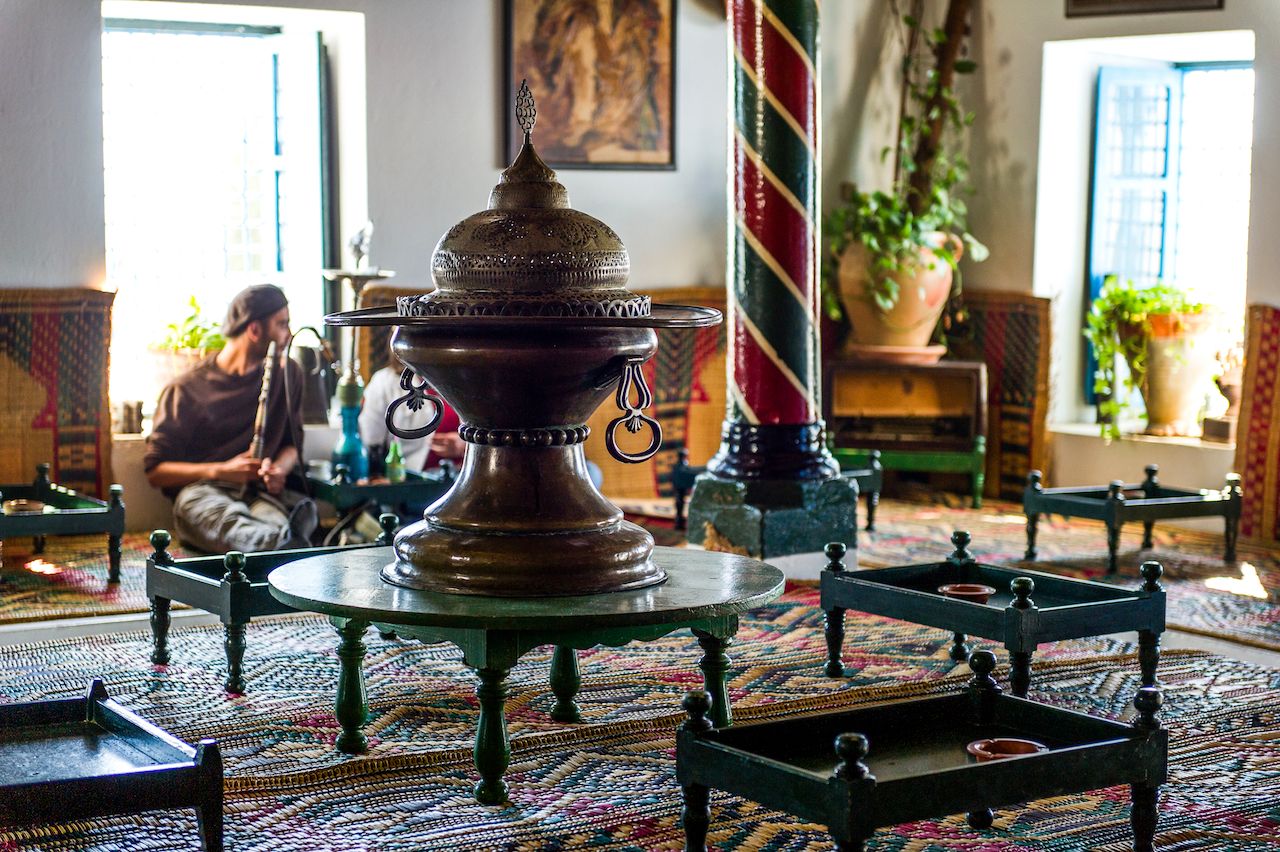
Photo: BTWImages/Shutterstock
Arab countries are known for strict drinking laws, often forbidding alcohol outside of tourist establishments like hotels and high-end restaurants. It’s slightly easier to get a drink in Tunisia, as large supermarkets in cities and tourist areas generally sell beer and wine, and across the country, main streets are lined with cafes and usually a bar or two. While casual cafes won’t serve alcohol, nicer restaurants will, and if you’re staying in a hotel or beach resort, getting a drink there won’t be a problem. Order a local Celtia beer and as you’ll see Tunisians doing on the regular. You’ll also find plenty of hookah bars.
French colonization of North Africa in the 19th and 20th centuries also saw the infusion of traditional French traditions, with winemaking standing as the most notable. This area of northern Africa actually has more than 2,000 years of history as a wine region, though strict Islamic policy effectively eliminated wine production until the French arrived in the late 19th century. The growing climate suitable to fine grapes also means that the peaches aren’t bad here, either.
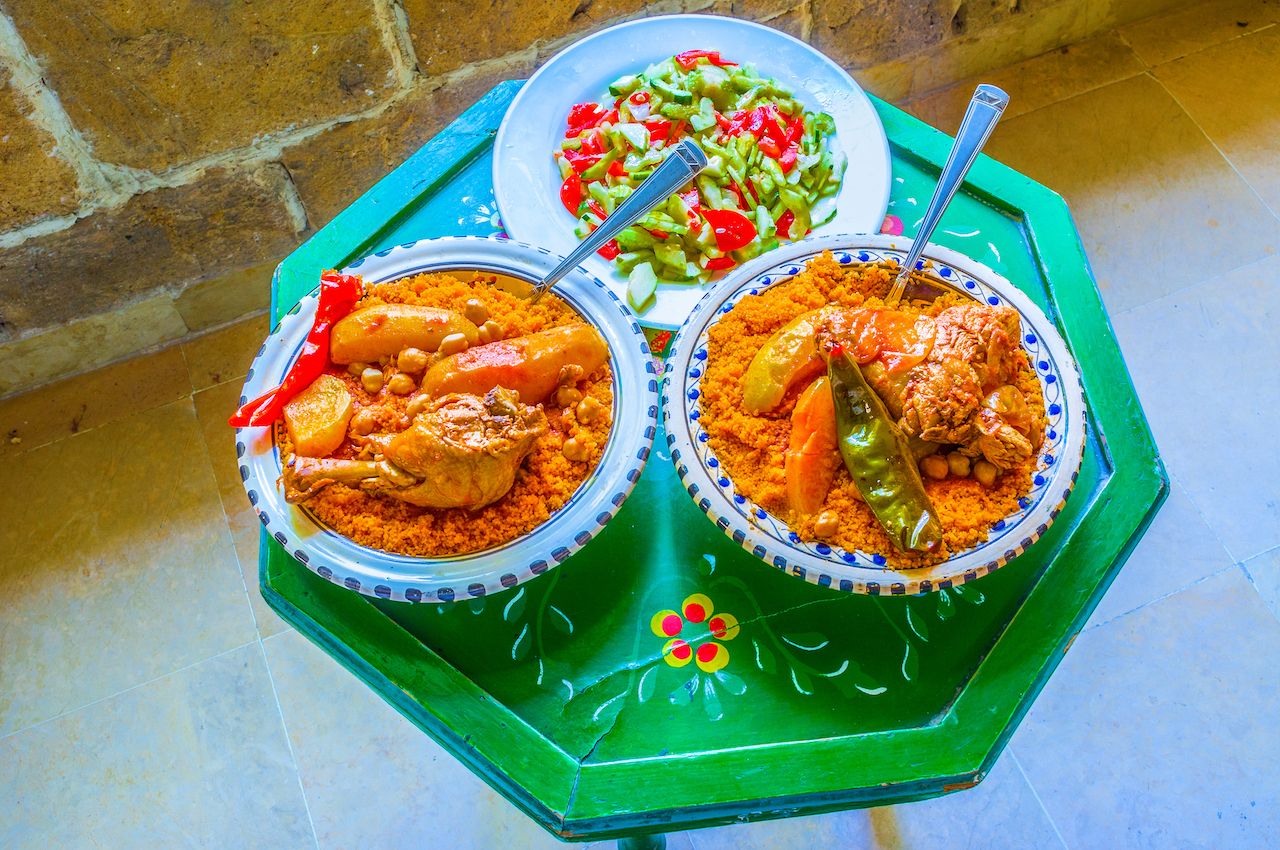
Photo: eFesenko/Shutterstock
If you’re even a low-level foodie, eating in Tunisia might just be the highlight of your trip. Take Mediterranean staples like couscous and Chorba stew, mix in an undying love for locally sourced seafood, and spice everything up with a hearty dose of a local hot chili paste called harissa, and you have Tunisian cuisine. A firm representation of both local pride and regional influence, dining here is a spicy experience full of complex flavors, bright colors, and portions rivaled only by a Texas-sized barbecue. Tunisians are not shy about sharing their favorite foods with visitors, whether at street market vendors or restaurants. While you’re here, eat as much brik as possible. A staple Tunisian dish with influence from as far away as Turkey, brik is a fried, triangular-shaped malsouka pastry filled with tuna, mashed potato, and raw egg. You can also meet your annual shakshuka quota 10 times over.
You’ll get your desert adrenaline fix.
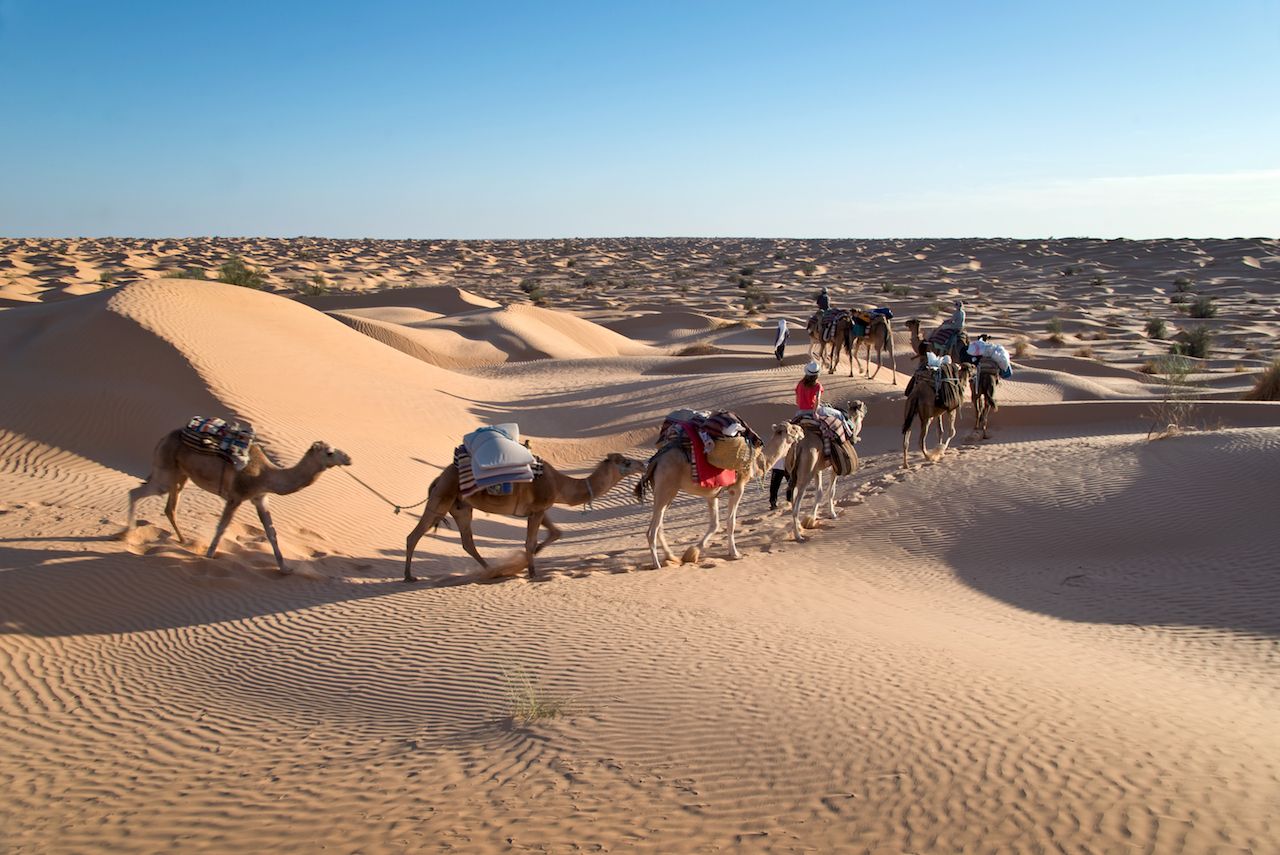
Photo: Delpixel/Shutterstock
The massive field of sand dunes called the Grand Erg Oriental are some of the most accessible dunes in the Sahara. Most of the dunes’ 370-mile expanse sits in neighboring Algeria though you can reach the Tunisian section by taking the C211 highway as far south as it goes. Here, in the unforgiving expanse of the Sahara Desert, you can trek across sand dunes with a tour company such as Autre Tunisie, who if you’re lucky will provide the experience of eating bread baked inside the sand. Keep your eyes peeled for camels. Other Tunisian outdoor pursuits include seabound horseback riding in Ranch Adada Djerba, on the island of Djerba, and exploring Tamerza Canyon outside the town of Temerza in the country’s far west.

Photo: Leonid Andronov/Shutterstock
While you’re down south, you may as well visit a planet from a galaxy far, far away. Tatooine, the birthplace of Luke Skywalker, was inspired by the Tunisian town of Tataouine, and it looks very much like the movie. Shots from Tatooine and a variety of scenes from the original Star Wars series were filmed throughout Tunisia. The town is about six and a half hours south of Tunis. You can visit Tataouine and see its famed underground residences, where the native Berber population live, on a 4×4 tour with Autre Tunisie.